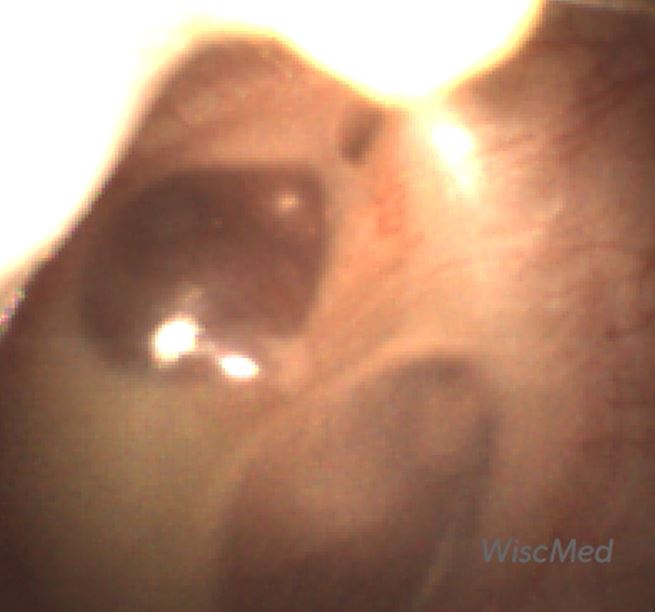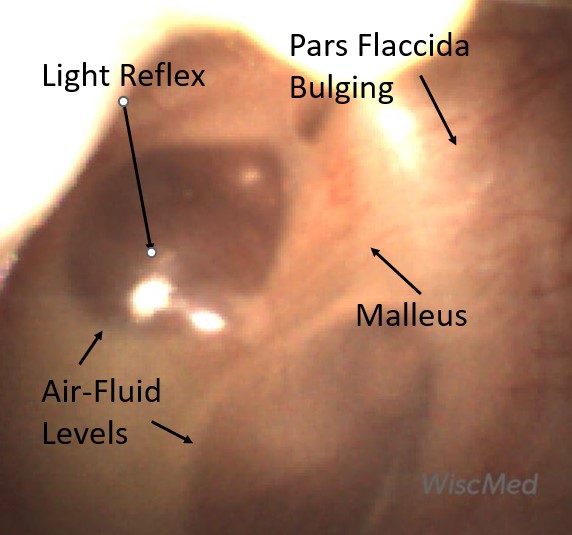
Middle Ear Effusion
A 30-month-old boy presents to the emergency department (ED) with a chief complaint of fever and cough for six days. His mother states her child was seen two days ago in Urgent Care and was negative for influenza, RSV, and Covid. He was diagnosed with bilateral otitis media and started on amoxicillin. Despite receiving three doses so far, he again had a fever last night to 102 F as well as a harsh cough. Mom brought him into the ED wondering if he needs to be on a different antibiotic. The child is afebrile and well-appearing. His voice is slightly hoarse, but his cough is neither barky nor productive. His Wispr otoscope exam is shown here. Should the child be switched to a different antibiotic?
No, the infection is resolving as expected. No change in treatment is indicated.
This child presents with concerns that symptoms have not fully resolved despite being on antibiotics for bilateral acute otitis media (AOM). This is a common scenario, one that raises the question of what constitutes treatment failure after initiating antibiotics for AOM.
It is generally felt that it takes 1-2 days for antibiotics to begin decreasing middle ear bacterial burden and tympanic membrane (TM) inflammation. Additionally, most children with AOM will demonstrate improvement in symptoms within 2-3 days. Given this timeframe, one might consider treatment failure if the child is continuing to have significant symptoms and the TM continues to appear bulging on exam beyond 3 days. That is not the situation for this patient.
The child in this case has a middle ear effusion (air-fluid levels in the middle ear) and mild bulging in the superior portion (pars flaccida) of the TM. This suggests that the Eustachian tube is properly venting the middle ear space. He does not have intense erythema and his mom does not endorse significant pain. Furthermore, the overall appearance of the TM is reassuring—it is translucent and there is a light reflex. These signs were discussed with the parent who felt reassured that the AOM was appropriately resolving, and the parent was instructed to continue with current management. Careful return instructions were given.
The development of AOM in images and its resolution are documented in this Wispr University article.















































































































































































































